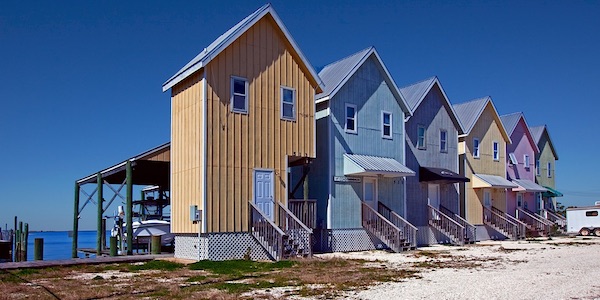
"Trees offer us a technology unparalleled in terms of perfection."
A switch to building with wood has a double positive impact on the climate, new research shows. On the one hand, the CO2-intensive production of steel and cement is reduced; on the other hand, the new buildings become a storehouse of CO2 from the atmosphere.
Rapid urbanization and population growth will require enormous demand for new housing and commercial buildings, the researchers argue. As a result, cement and steel production is likely to remain a major source of greenhouse gases.
"But that risk to the global climate system can also be transformed into a way to slow climate change, if we increase our use of wood in a sustainable way," said Galina Churkina, who is a researcher at both the U.S. Yale School and the Potsdam Institute for Climate Research. "Our analysis shows that this can be done on two conditions. First, the forests must be sustainably managed. And second, the wood from destroyed wooden buildings must be preserved."
Scenarios
The scientists simulated four scenarios for the next 30 years, assuming the current situation and an increase in the proportion of wooden buildings by 0.5, 10 and 50 percent. The consequences for the climate are significant. Building with wood reduces CO2 emissions by at least half compared to using steel and cement.
Added to this, then, is the fact that wooden buildings can store an amount of CO2 that was taken from the atmosphere during the trees' growth. A five-story apartment building made of laminated wood can store up to 180 kilograms of CO2 per square meter. The global potential of building with wood thus ranges from 10 million tons of CO2 in the business-as-usual scenario to 700 million tons in the most ambitious.
Sustainability crucial
In doing so, however, it is essential that forests not be cut down at random to produce the wood, the researchers stress.
"Protecting forests from clear-cutting and other threats is essential to enable their sustainable use as building materials," says coauthor Christopher Reyer of the Potsdam Institute. "Plantations can also play a role in meeting demand, including bamboo plantations by small farmers in tropical and subtropical regions."
The scientists also advocate further reduction of firewood use and reuse of wood from building demolition as strategies to boost supply.
Technically interesting
Wood has been receiving increasing attention as a building material for several years because it has a number of interesting technical properties. Surprisingly, large buildings made of wood also prove sturdy during a fire because the core of the beams remains protected by the charred exterior during a fire.
"Trees offer us a technology unparalleled in terms of perfection," says co-author Hans Joachim Schellnhuber, director-emeritus of the Postdam Institute. "They take CO2 from our atmosphere and efficiently transform it into oxygen for us to breathe and carbon in their stems for us to use. I can't think of a safer way to store CO2. Societies have been making good use of wood for centuries, but now the challenge of climate change requires significant upscaling."
Source: https://www.duurzaamnieuws.nl/bouwen-met-hout-slaat-co2-op/
